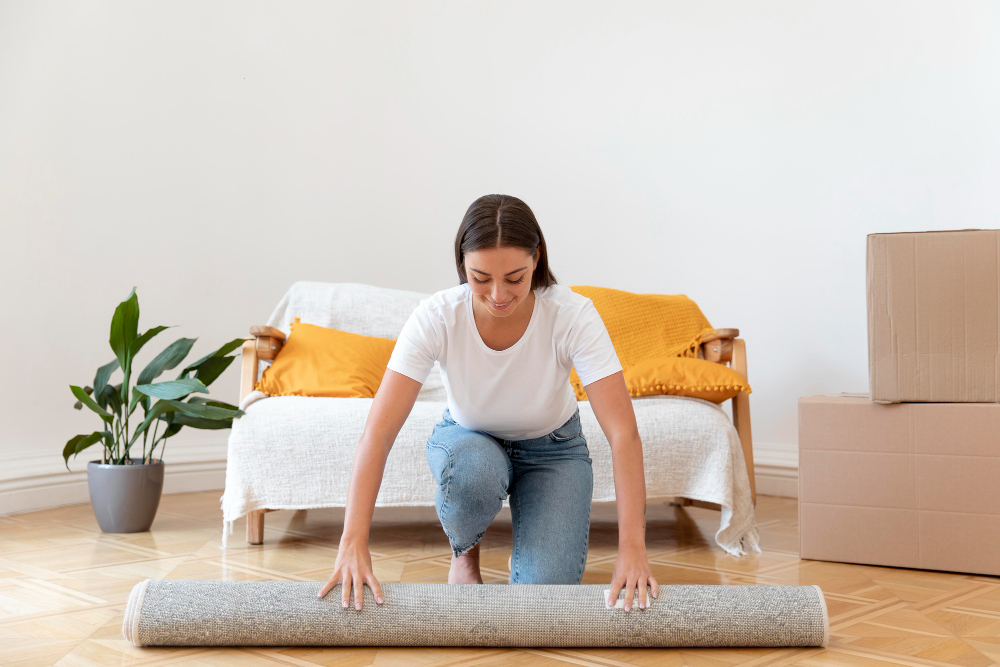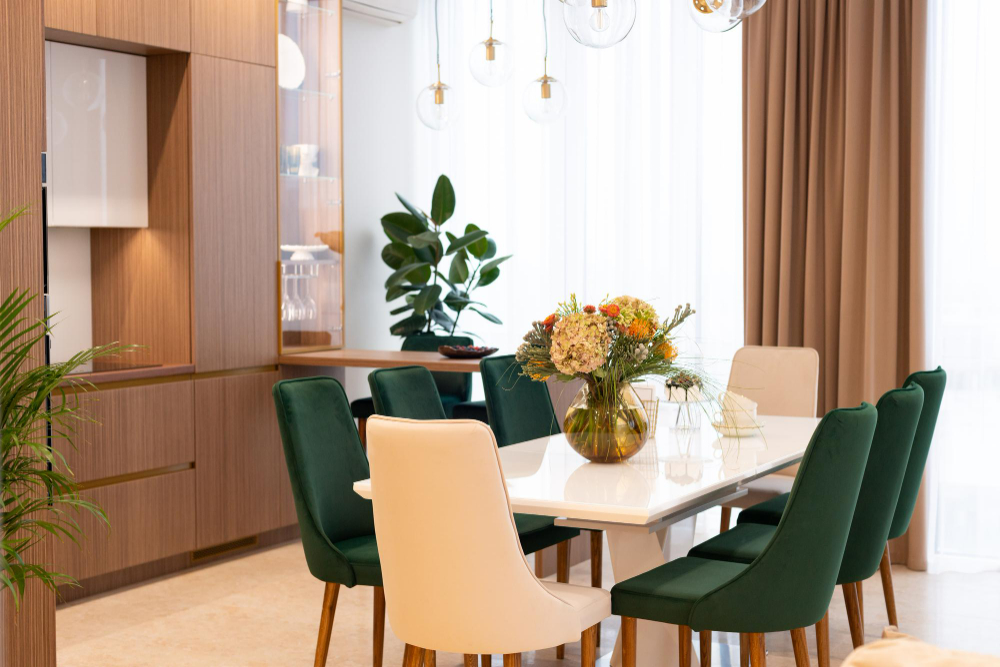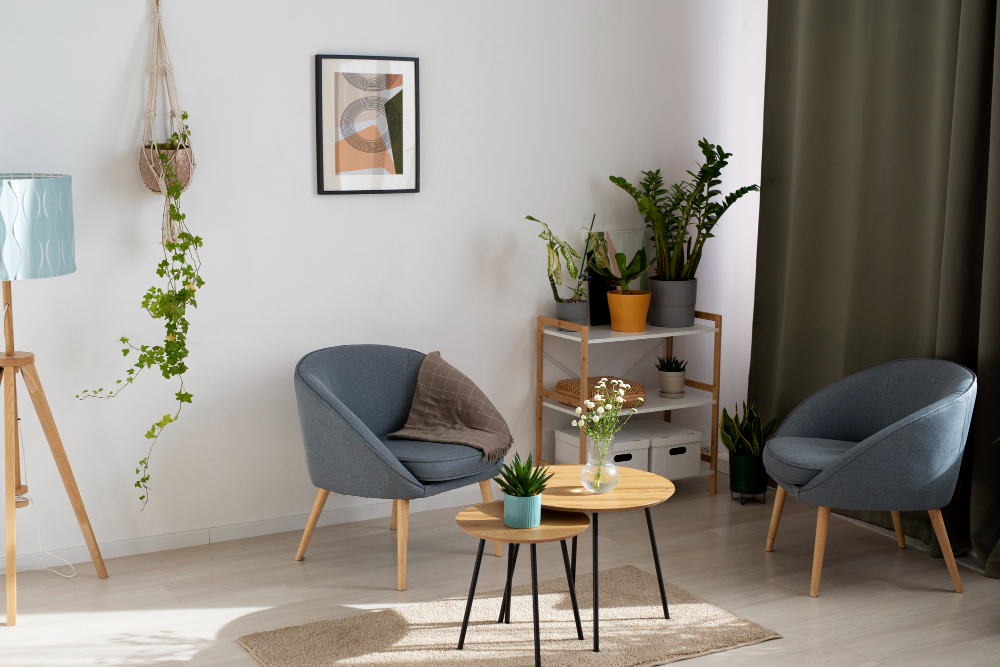House Interior Design Basics: Things to Do

As much as we may want to, we can’t all afford to hire a decorator for our home’s interior design. But that doesn’t mean that you can’t redecorate your rooms, whether it’s the kitchen, living room, or bedroom.
You don’t need to spend a lot of money and time decorating your room. There are simple ways how you can do it, and here are some tips:
The first rule is to choose the right color scheme.
The first rule of interior design is to choose the right color scheme. You want something that reflects your personality, but you also want it to be pleasing to the eye and create a mood or theme. Color schemes can be used to create patterns, too: having the same colors throughout your living space will make it feel like one room rather than several rooms.
If you’re not sure how this all works, here are some examples of good color combinations: red and blue; brown and white; yellow, purple, and green; orange with pink accents on furniture (this combination looks great for a child’s room or small room).
Even though it may seem like an easy task, choosing color combinations is not always simple because many people do not know how to choose colors properly.
The most common mistake people make when choosing color combinations is using too many different colors at once; this makes their rooms look chaotic instead of pleasing and relaxing. If you want to use multiple colors then try using just two or three at once so that they don’t clash with each other too much (or at all).
You can also change curtains or blinds on windows, cushions, and blankets on your furniture.
In addition to changing the furniture in your house, you can also change curtains or blinds on windows, and cushions and blankets on your furniture.
These types of decor changes will help you control the amount of light that enters a room. Curtains are great for this because they come in many different types and styles. You can choose between simple shades that just let some sun in or heavier curtains that completely block out all light when closed.
If you don’t want to block out all of the light in the entire room but still want something darker than sheer shades, then try buying some blackout drapes (heavy material) so they’ll help keep out any unwanted rays coming through your windows during daytime hours like early morning sunrises or late afternoon sunsets which tend to hit at certain times every day depending on where you live!
Blinds are another option if you want even more privacy than what heavy curtains provide because they’re usually made from wood slats which means there’s no fabric involved so there’s nothing blocking out visibility whatsoever unless closed up tight enough such as those found inside homes made entirely from concrete blocks instead of traditional bricks/mortar construction materials.
Play with patterns and textures to make the interior design look more interesting.
Patterns and textures can be used to create a more interesting interior. For example, you can use a pattern on the walls, floor, furniture, and even accessories. Patterns will help break up the space while still keeping it looking cohesive. If there are too many patterns in one room it can look busy and feel overwhelming, so just remember to add them in sparingly. Wall-to-wall carpeting with unique patterns is a great example.
Make sure that you get enough light in your rooms.
This is not only good for aesthetics but also for your health. If you only have one lamp in a room, it will look dark and gloomy, which can be depressing. However, if you have enough sources of light then you will have more options for creating different moods or atmospheres in your home. You can even use indirect lighting as an alternative to direct lighting if you want to create a certain atmosphere without having any glare on the walls or other surfaces.
This doesn’t mean that every room in your house needs to have a skylight or a window, but if you don’t have enough natural light coming in, it can be tough to style your rooms properly.
If you don’t have as much natural light as you’d like, choose bright colors for furniture and walls so that there’s enough contrast between them. You also might want to consider adding lamps or lighting fixtures around the house so that there’s more illumination when needed.

Don’t forget about mirrors!
One idea is to use mirrors. Mirrors reflect light, which can make even the darkest of spaces appear brighter and a small space larger.
Use mirrors to reflect light into dark corners, or to bounce light from one room into another. Mirrors also add visual interest and dimension to a room by creating the illusion of space through reflection. You can use them on walls, furniture, or even in place of artwork by hanging them vertically or horizontally on your wall (just remember that you’ll have to clean them periodically).
Choose the proper lighting fixtures as focal points
Lighting fixtures can also serve as accessories and focal points to help create a certain mood that you want for each room. The right lighting will make your space look better, be more functional, and feel more comfortable. When you’re shopping for new light fixtures or replacing old ones, there are many factors to consider:
- What type of light fixture do you need? There are countless styles of lights available today and the choices can be overwhelming at times. You may want a traditional chandelier or one with modern lines; maybe it’s time for something industrial-inspired?
- How much does it cost? If you’re on a tight budget, don’t worry—there are plenty of great options out there that won’t break the bank!
Choose accessories carefully, from the coffee table to art decors.
Accessories can draw attention to certain items in a room and help create the mood that you want.
Consider the accessories you want to use in your home. Accessories can draw attention to certain items in a room and help create the mood that you want. For example, if you have a large television on one wall of your living room, consider adding decorative throw pillows that coordinate with other furniture in the room. This will help add interest to an otherwise dull area while also keeping the focus on what matters most: watching TV!
You can use accessories to decorate your home and create a certain mood or ambiance. This is especially true when it comes to lighting fixtures such as lamps, chandeliers, and a floor lamp–all of which are available at hardware stores all over America today so there’s no need for anyone not interested enough in interior design jobs right now (or maybe just not interested at all).
You may use unique furniture with extra storage space to serve double duty.

Add personal touches
Add personal touches. You can put photos on display, hang art pieces, or create a gallery wall.
Think of your home as an extension of yourself and do what makes you happy. For example, if you enjoy collecting vintage items, display them proudly in your living room!
Add plants and flowers
Adding plants and flowers to different parts of your home is a great way to add color, texture, and personality. Plants are good for creating a homey feel while adding color and texture to any space.
Plants help you relax
Studies suggest that the presence of plants in an office environment can reduce stress by up to 80%. And just like pets, they don’t take up much space in the whole room!
Plants help clean the air in the dining room
With their leaves absorbing carbon dioxide and releasing oxygen, some indoor plants can purify the air around them by removing toxins such as formaldehyde from furniture materials or cleaning products. Some also absorb other chemicals from cigarettes, hairspray, or perfume for example which makes breathing more comfortable for those who suffer from allergies related to these scents – especially if you have pets! Try adding various plants in your powder room.
Plants help you sleep better
Studies show that having something green in view improves sleep quality by helping regulate melatonin levels (the hormone responsible for regulating our circadian rhythm), leading us into deeper REM cycles where dreams occur.* For most people this means setting up a small desk terrarium filled with mosses with miniature succulents placed strategically throughout so as not to interfere with light patterns necessary when sleeping; however if this isn’t possible consider placing live houseplants right next door instead.”
You don’t need to spend much money to redecorate; just use these basic interior design tips!
Redecorating your rooms doesn’t have to be expensive. You can use the things you already have in your home, or even just a few dollars of creativity, to make drastic changes for less than you might think.
As you can see, there are many different ways to redecorate your home’s interior design without breaking the bank. These tips will help you create a stylish and inviting space that reflects your personal style and makes visitors feel welcome. You don’t need to spend money on expensive items or hire an interior designer; just use these easy tips!




